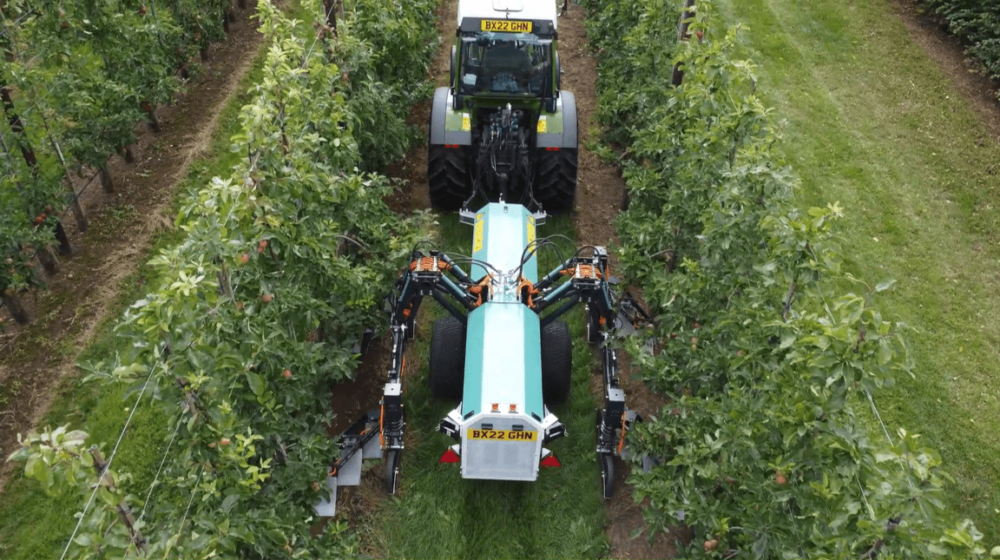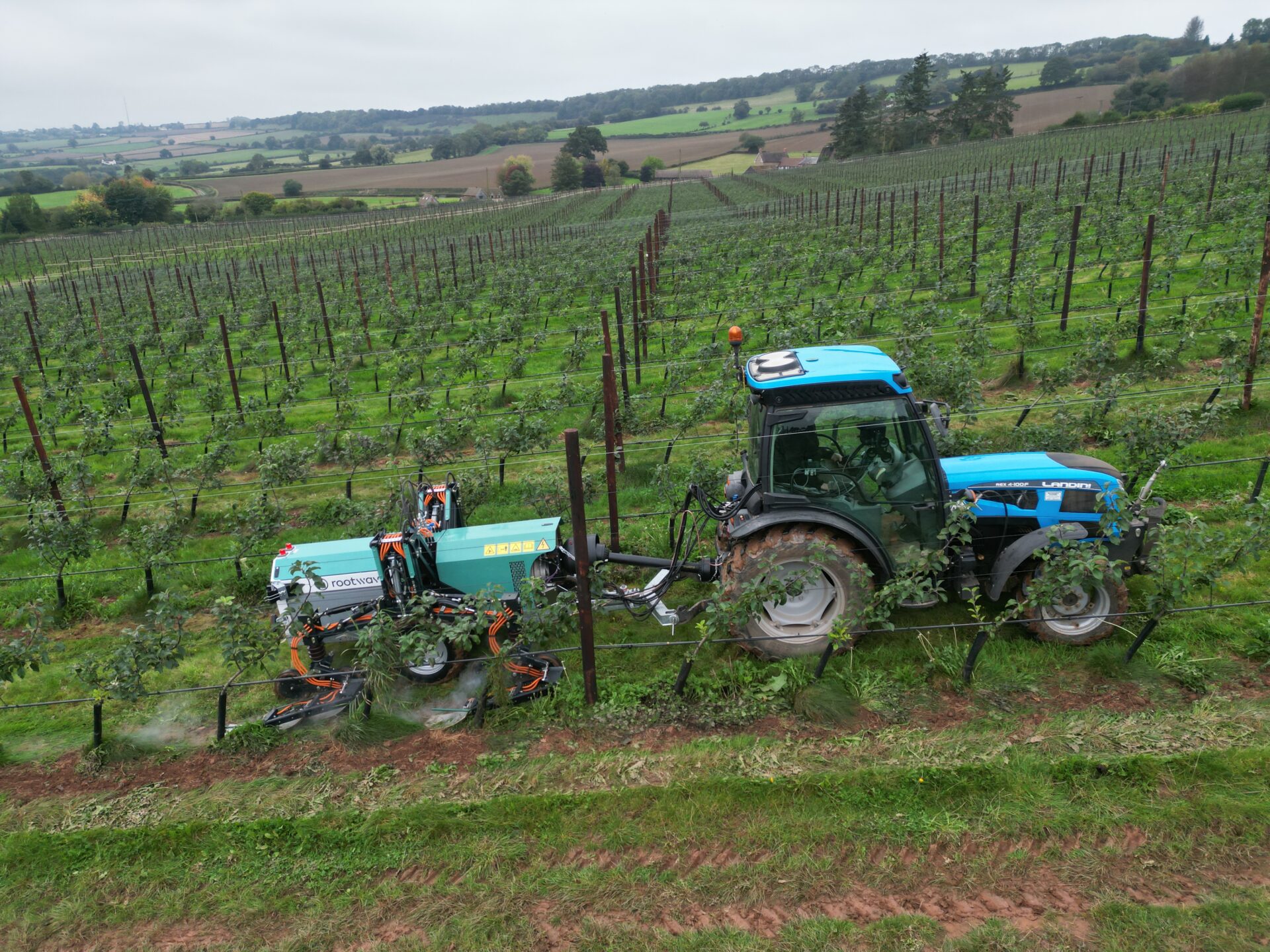“If I had to put a brand on me, it would be the ‘innovation guy,'” says agtech veteran Jorge Heraud.
Heraud is probably best known as the founder of Blue River Technologies, which was acquired by John Deere in 2017 for $305 million. Post-acquisition, he spent seven years with Deere as its VP of automation and autonomy, a role he recently wound down. Now, he’s assumed a new position as a board member of UK startup Rootwave, which has developed an autonomous weeding system that uses electricity to zap unwanted plants in the field.
His enthusiasm for all things innovation has driven the whole of his career, which includes time in both the startup world (at Blue River Technologies, which he co-founded) and at big corporations, most notably Deere.
“I’m going to be joining startup boards and advising and that’s why I joined the Rootwave board,” he tells AgFundernews. “It’s a big new technology that can have this huge impact.”
“The whole industry is very aware of Jorge and who he is,” adds Rootwave CEO Andrew Diprose. “Blue River was about weed control. He knows his space, he knows machinery, so [Rootwave] resonated really well with Jorge and his values. To have him as a board member will offer a lot to our company in terms of all the experience and guidance he’ll be able to bring to the table.”

Herbicides: ‘We’re on a treadmill and this is not going to end pretty’
Heraud is no stranger to weeds, having joined Deere when the company acquired Blue River Technologies for its “See & Spray” system. That technology, which uses computer vision to diagnose and execute actions like spraying only weeds, is now a firmly entrenched offering in the John Deere toolkit. Heraud has said in the past that See & Spray can help farmers reduce their non-residual herbicide use by more than two thirds and maintain a hit rate comparable to traditional spraying.
Rootwave takes a different approach to tackling the ever-present weed problem; Diprose calls it using electricity to “boil the weed inside out from the root up.” The Rootwave system passes an electrical current through the weed, which turns that energy into heat, kickstarting the boiling process. Currently, the startup has a small machine that hitches to the back of a tractor and can treat orchards and vineyards; production and delivery of these machines has already begun.
“I had been looking for alternatives to herbicides for a while,” says Heraud.
He adds that herbicide use amounts to $35 billion per year, a figure that equates to roughly 20 billion gallons of herbicides applied annually.
“That’s like a small lake of herbicides every year,” he says. “The problem is that it’s not working.”
Weed resistance to herbicides, for example, means that instead of using just one solution, farmers have to employ two or three each year, and sometimes four.
“It gets worse because once you get a weed that is resistant or at least partially resistant, all the seeds it produces are going to likely be also resistant or more tolerant of herbicides,” he adds. This in turn will up the number of herbicides needed on the field during any given year.
“We’re on a treadmill and this is not going to end pretty.”

A safer way to zap weeds
Biologicals can be a good alternative, he says, because they tend to fit directly into farmers’ existing workflows, but the space remains littered with efficacy issues and more than a few solutions that might be classified as “bugs in a jug.”
Rootwave’s approach appealed to Heraud because of the way the company uses electricity.
“I was looking for alternative ways of killing weeds, given that chemistry is not going to work forever,” he says. “I had seen lasers and I had seen electricity and I wasn’t very keen because of two problems. One was that you need a lot of electricity [to kill weeds] and on top of that it wasn’t very safe.”
Traditional electro-weeding uses a direct current, which flows in one direction. Rootwave’s system is based on alternating current, which uses a higher voltage but transmits energy more efficiently, which Heraud says makes it safer to use.
He believes Rootwave’s approach is also superior to laser weeding because, unlike humans or animals that would bleed to death if hit by a laser, plants are “almost immune.”
“It’s very hard because you have to hit [the plant] exactly at the growth point [with the laser] and need to dwell there. Plants have multiple growth points, so you’d have to kill them all. [Rootwave] goes through the plant and burns it, and it does it really, really fast.”
“There are several companies using high voltages to boil weeds, but we use high-frequency high voltages and they’re orders of magnitude more safe for the operator, the bystanders and the environment,” says Diprose. “I think [Jorge] really appreciated that and it really resonated with him as an engineer.”

Getting back to roots
A desire to return to the startup world is ultimately what led Heraud to end his time at Deere. By agreement, he was required to stay four years after the acquisition of Blue River Technologies.
“I was having fun and decided to stay longer and also wanted to see some things complete their cycle,” he says of his additional three years at the company.
See & Spray was one of those things. “Although we had just started shipping it when the four-year mark hit, I didn’t feel like we had really gotten to the volumes. Now we have. Last year we saved 8 million gallons of tank-mixed herbicide from being applied and it’s scaling very fast.”
The challenges for See & Spray now will be “big company challenges,” rather than those around innovation, he says.
“I really like John Deere, but I also felt like it was time to go back to smaller companies, back to my roots. Even as awesome as John Deere is, it’s a little bit different to be an executive at an 80,000-person company than to be CEO of a startup.”
Autonomy in ag
As for what areas of tech excite him, autonomy is top of the list.
“Agriculture is a really good place for autonomy,” he says, and suggests it’s more or less a foregone conclusion in the industry.
The challenge going forward will be automating all of the different parts of agriculture and making sure these work together.
“It’s not just going from Point A to Point B,” he says. “If you think about harvesters, they’re big factories. If you’re going to enable a person to get out of the cab, you need to automate all of the other things the driver was doing — imaging, spraying, harvesting. These are completely different machines and you need to automate all of that.”
He believes we’ll see multiple companies specializing in different areas as autonomy in ag progresses.
Drones are another area to watch, he says, as the devices are getting better and the FFA is seemingly willing to give more licenses to companies. AI and better understanding of soil through remote sensing are also areas to keep an eye on for the future.
Whether Heraud joins companies in all these areas or just some remains to be seen. While there’s “nothing to announce yet” in terms of other companies, he says he is in conversations with other tech companies, though none in the same space as Rootwave.
“My plan is to find a ‘best of breed’ company in any given space,” he says. “I’m lucky I have a lot of good relationships in the industry and am in a very good position to be able to navigate to these awesome companies.”




